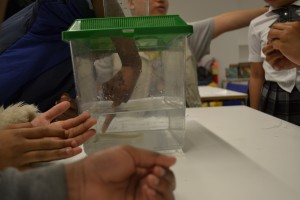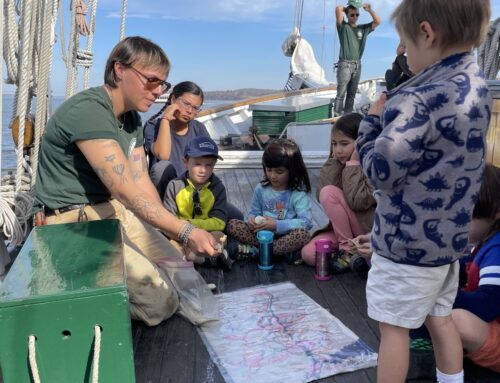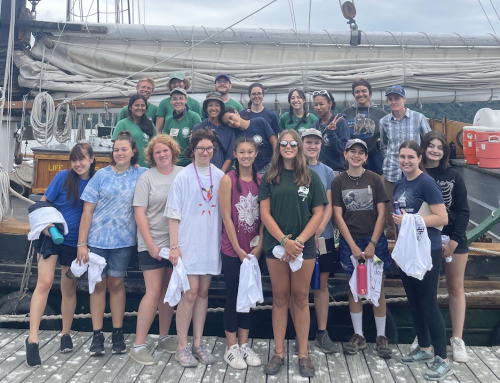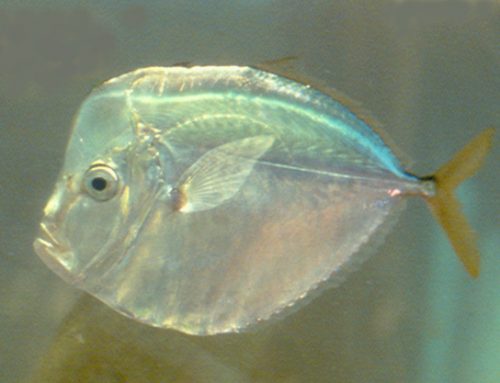Posted by Eli Schloss
On May 2nd I had the pleasure of working with 30 kids at the Discovery Center in Jamaica Queens. The Center is part of the main branch of the Queens Library and it is a wonderful interactive space that opened last year. They have an afterschool program attended by children in the area. I brought in 7 glass eels and one adolescent, or yellow eel. I showed the students a Powerpoint of the eels’ life cycle, had them calculate its migration route from their brithplace to the NY Harbor (more than 1,000 miles), and of course they got to get their hands wet by touching a live specimen.

- Would you like to pet an eel?
Eels begin their life as planktonic larvae found in great numbers in the Sargasso Sea near Bermuda. They drift with the currents for up to a year or more. Once they reach the coastline, they transform from a 1/4 inch willow leaf shape to a long, thin, transparent glass eel. These glass eels enter the estuary and come to reside in the tributaries of the river, a good place to hide from predators and grow to their next stage, the “yellow eel”. This is the stage most common in the estuaries and rivers. Yellow eels have been found as far from the ocean as Iowa. They live in the river systems from 4 to 20 years, eating fish, fish eggs, insects, and crustaceans until they transform once again for their final journey back to the Sargasso. These “silver eels” are darker in color with a silver underside and large eyes. They stop eating, descend the rivers and begin their migration to the Sargasso Sea, their nursery and tomb.
But the great mystery is how they breed. We have never seen a live adult specimen in the Sargasso nor do we know exactly where they breed. The Sargasso is where we find the smallest larvae, so we presume that is where they hatch.
Realize that the entire breeding population of North American Eels gather in one spot. So if the eel is from Jamaica or Jamaica Queens, they all return to the Sargasso to complete their life cycle.
The students were excited and engaged to learn more about this amazing creature. They asked many questions, respected the animal, and took part in all the activities. The Queens Library program is a great asset to the community. I look forward to working with the students again.




